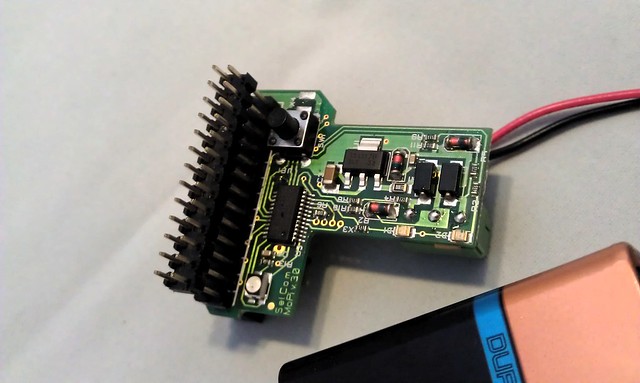An interview with Hamish Cunningham
In this last interview from this year's Raspberry Jamboree, We hear from Hamish Cunningham about his kickstarter project MoPi. Which was successfully funded and is now a available for purchase
Interview
Les Pounder: Hamish, thanks for talking to me, can you tell us, what is MoPi?
Hamish Cunningham: For a while I wanted to buy a battery pack to enable my Raspberry Pi to be truly mobile. I searched to find something suitable but there was nothing available for my needs. The conventional battery packs available do not allow you to cleanly shutdown the Raspberry Pi. So with that in mind I built my own mobile power supply that enables a Pi to cleanly shutdown.

LP: So how does your project differ to the others on the market?
HC: Well as I said, the other solutions do not allow your Raspberry Pi to power down cleanly. And this can lead to many issues for the operating system and the SD card itself. MoPi constantly sends a notification to the Pi informing it of the battery’s status. So if the Raspberry Pi needs to shut down it can do so while there is enough power to do so. The project also accepts many different types of power.
LP: So can you swap between the different types of power?
HC: Yeah if you are running the Raspberry Pi on a battery and you notice it is running low on power, you can easily swap to another power source such as a car outlet.
LP: So how long did it take you to prototype the project?
HC: It took us around six months to get the project into a state where we could feasibly think about setting up a kickstarter funding campaign.
LP: Talking of the campaign, how did it go?
HC: We hit our initial target quite quickly, within a couple of days. We then added a number of stretch goals which we met relatively easily. In the end we raised over £23000 which is a fantastic amount of money and enables us to really expand on our initial idea.
LP: What projects would you like to see using MoPi?
HC: I’d love to see the Pi away from the plug socket and out doing all manner of great things. I’m currently playing with another project, which is a virtual paintbrush that uses an accelerometer in the form of PiBorg’s XLoborg add on board to paint with a virtual paintbrush Pi that is connected wirelessly to another Pi across the room that takes this data and paints on the screen. With MoPi I can create a consistent power supply to enable me to use this effectively.
LP: Wow the virtual paintbrush sounds fab! Is it an open source project that anyone can replicate?
HC: Yes, most definitely. The code is available online via my website http://pi.gate.ac.uk/ and details on how to build the project are also there.
Many thanks to Hamish for the interview. You can read my review of the MoPi board in a future issue of Linux Voice magazine